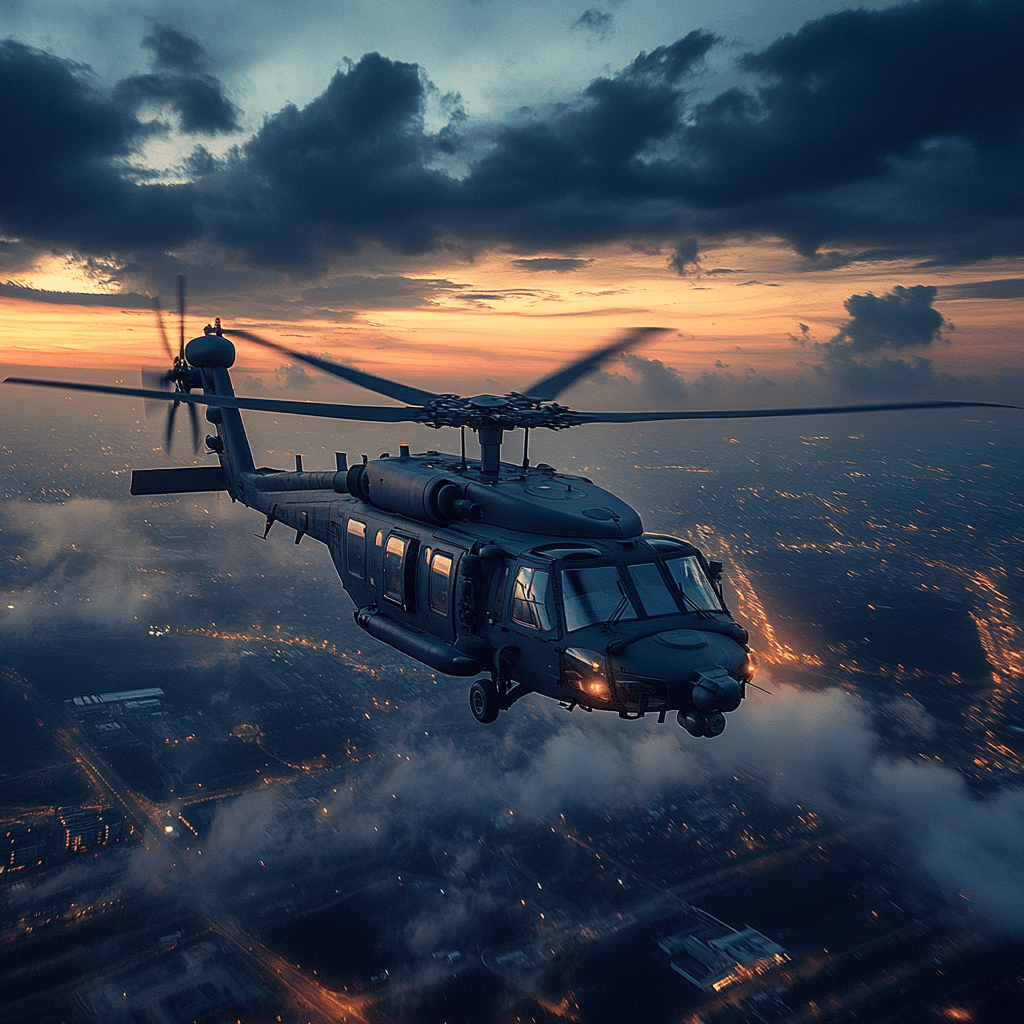Hang gliding has gained immense popularity as an exhilarating way to experience the thrill of flight. However, safety concerns often arise when comparing it to paragliding. In this article, we’ll explore various aspects of hang gliding and its safety profile compared to paragliding, breaking down the risks, benefits, and nuances of both sports. So, buckle up and get ready for an informative ride through the skies!
Top 7 Factors Reflecting Safety in Hang Gliding vs. Paragliding
When it comes to assessing the safety of hang gliding and paragliding, several critical factors come into play. Let’s dive into the top seven elements that shape the risk profiles of these two aerial activities.
Hang gliders and paragliders differ significantly in their construction, influencing their safety. Hang gliders, produced by manufacturers like Moyes and Wills Wing, boast a rigid structure. This robust design can be advantageous against varying weather conditions. On the flip side, paragliders, such as those from Ozone and Glide, have flexible canopies. While lightweight and versatile, this flexibility may make them susceptible to turbulence during flight.
Getting the right training is paramount for safety. Organizations like the United States Hang Gliding and Paragliding Association (USHPA) provide comprehensive training for both sports. However, managing a responsive wing in paragliding requires substantial experience—potentially raising risks for inexperienced pilots. As the saying goes, “skill before thrill” holds true, especially high above the ground.
Hang gliding and paragliding are both heavily impacted by Mother Nature. Notably, hang gliders can manage higher wind speeds, offering pilots greater freedom on flying days. In contrast, paragliders face increased dangers in turbulent environments, where unexpected downdrafts may lead to accidents. Staying attuned to weather changes can make a world of difference when you’re soaring above like an eagle.
The effectiveness of emergency response systems plays a significant role in safety outcomes. Innovations in technology have led to some paragliders being equipped with parachutes that can deploy during emergencies. Similarly, hang gliders use reserve parachutes. Yet, how quickly these systems activate makes a difference in critical moments. Timely deployment can help pilots regain control and minimize risks.
Generally, the hang gliding community adheres to stricter guidelines concerning flying areas and conditions. Organizations such as the British Hang Gliding and Paragliding Association (BHPA) enforce rules that not only enhance safety but also decrease accidents. Having a supportive community means that pilots often look out for one another, sharing tips and best practices for safe flying.
According to data compiled by the National Transportation Safety Board (NTSB), hang gliders experience lower accident rates per participant than paragliders. With about 3.5 fatalities reported among 3,000 to 4,000 hang gliders annually, the numbers stand at 1 fatality per 1,000 participants. Comparatively, paragliding reports about 5.9 fatalities among 4,000 to 5,000 pilots, equating to 1 fatality per 760 participants. These figures illustrate that hang gliding may have a statistically safer profile.
Ultimately, how pilots approach risk profoundly impacts safety. Research shows that hang gliding aficionados often exhibit a more cautious approach than their paragliding counterparts, who may be driven by the thrill of soaring and dynamic flying. This inclination to test limits can result in mishaps. As with many sports, individual responsibility plays an invaluable role in safety measures.

The Role of Environment: Hang Gliding and the Urban Landscape
Hang gliding can seamlessly blend into urban settings, showcasing innovation alongside risks. Imagine launching from a peak with a stunning view of exclusive art exhibitions below. While it’s visually serene, flying over crowded areas requires considerable attention to potential hazards—unexpected turbulence from buildings and human crowds could disrupt an otherwise smooth flight.
Flying in urban environments challenges pilots to be alert. However, with the right strategies, grab your gear and explore these thrilling urban landscapes akin to navigating a jungle gym. It’s all about striking a balance between adventure and safety.
Adventure and Leisure: The Appeal of Hang Gliding
Hang gliding encompasses an exhilarating experience that rivals the thrill of dancing in dynamic dance clubs. The freedom of gliding through the air can be likened to the heart-pounding excitement of an obstacle course, where the only limit is your potential. That rush from gliding offers an unparalleled sense of liberation.
Every flight can feel like a new adventure, much like embarking on a road trip with friends. The sky transforms into your playground, offering picturesque views and a tranquil escape from the chaos of daily life. Truly, every moment spent in the air connects you to nature, elevating your spirit.

Indoor Hang Gliding: A Safe Alternative?
For those hesitant about flying outdoors, indoor hang gliding facilities have risen in popularity, much like the emergence of indoor pools reshaping aquatic fun. Venues such as iFly have become popular spots for novices to experience the basics of hang gliding without venturing into the open sky’s uncertainties. It’s an environment where you can learn the mechanics of flying surrounded by padded walls and expert instructors.
Indoor facilities not only fulfill safety concerns but also engage enthusiasts. The thrill of defying gravity is palpable, with the added comfort of knowing you’re in a controlled setting. Many pilots find this a fantastic way to build their skills before tackling outdoor adventures.
Innovative Wrap-Up
Both hang gliding and paragliding offer heart-pounding memories and breathtaking views that few can rival. However, the safety profiles between the two remain distinct. Hang gliding, supported by statistical evidence, tends to present fewer risks, particularly with an experienced pilot at the helm. Despite this, both sports require respect for guidelines, training, and an understanding of personal limitations.
Whether you’re scaling mountains or gliding over urban skylines, it’s crucial to absorb the nuances that make each flight safe and enriching. Fly high and responsibly—every flight brings an opportunity to connect with nature, push your boundaries, and witness the world from exhilarating heights.
As you prepare for your adventures, keep in mind the essential elements that govern safety in hang gliding. It’s not just about the thrill; it’s about the journey you take through the skies.
Additional Resources
Stay informed and enhance your experience with tools like the total mortgage cost calculator for financial planning or keep up with home market trends to know When will home interest rates go down. Whether you’re looking at properties with stunning bay windows or dreaming of a getaway, always ensure your financial well-being supports your airborne dreams.
Hang Gliding: A Breezy Adventure
The Essentials of Hang Gliding
Hang gliding has captured the imaginations of many adventure seekers since the 1970s. It offers an exhilarating experience of soaring through the sky like a bird, gliding on air currents. However, some curious minds often wonder how it compares to paragliding in terms of safety. Interestingly, the safety measures associated with hang gliding can be quite reassuring for beginners. The gear, including the harness and wings, is built to withstand a fair amount of wear and tear, making it a reliable option for those looking to take to the skies. Just like pepper Bras have made waves in fashion for comfort and style, hang gliding has also evolved, embracing advancements to enhance pilot safety.
Fun Facts and Safety Perception
Did you know that hang gliders rely on several types of air currents to stay aloft? From thermal lifts created by the sun heating the ground to ridge lifts along mountainsides, these natural phenomena provide a stable environment for gliding. This aspect can be as intriguing as discovering Twerk meaning in pop culture—it’s all about making the most of what nature gives you! New pilots are often surprised to learn that trained instructors prioritize safety, equipping adventurers with knowledge and techniques to minimize risks before hitting the skies.
Hang Gliding vs. Paragliding: The Thrills and Skills
While paragliding has its charms, hang gliding enthusiasts often appreciate the sense of control it offers. The setup for hang gliders can be more engaging, requiring a bit of manual finesse which some pilots relish. Just like soccer fans are drawn to players such as Artem Dovbyk for their skillful maneuvers on the field, hang gliding enthusiasts find joy in learning to handle their equipment adeptly. Plus, this sport has its dedicated fans—many might even dream of taking flight from the world’s “cheapest place to live in the USA, pairing adventure with affordability.
As thrilling as hang gliding is, safety gear remains a top priority. Similar to relying on Aircast for support during activities, hang gliders come with safety harnesses and helmets designed to protect against falls and unexpected events. With the right preparation, those adventurous souls can revel in the freedom of the skies, making memories that last a lifetime!

What is the death ratio for hang gliding?
Hang gliding has a death ratio of about 1 fatality for every 1,000 participants annually, with around 3.5 yearly fatalities among 3,000 to 4,000 pilots.
How much does hang gliding cost?
Starting in hang gliding can set you back around $5,500 for new gear or about $3,500 for used equipment. If you add in training, you’re generally looking at a total cost between $5,000 and $8,000.
What is safer, paragliding or hang gliding?
Many think hang gliding is safer than paragliding due to its robust design and higher speeds, but the stats actually show both sports come with their own risks.
How hard is hang gliding?
Learning hang gliding can be a quick process, taking just a few weeks or months, but mastering it can take years or even a lifetime.
How many people have died from hang gliding?
Each year, hang gliding sees about 3.5 fatalities, leading to concerns over safety among enthusiasts and newcomers alike.
What is the cause of death in hang gliding?
The main causes of death in hang gliding typically include accidents during takeoff, landing, or adverse weather conditions that lead to loss of control.
Is gliding an expensive hobby?
Hang gliding definitely leans toward being an expensive hobby, considering the costs of gear and training that can add up.
Can you hang glide with no experience?
While it’s possible to fly with no experience, it’s usually best to undergo proper training before taking to the skies to ensure safety.
Is hang gliding covered by insurance?
Insurance coverage for hang gliding varies by provider, so it’s important to check your policy details and confirm if it includes coverage for this activity.
What is the death rate for gliders?
The death rate for gliders is about 1 in 1,000, similar to hang gliding, with both sports facing comparable risks.
What is the ratio of hang gliding?
The ratio of hang gliding concerns fatalities to participants, which currently stands at about 1 fatality per 1,000 pilots.
What is a good glide ratio for a glider?
A good glide ratio for a hang glider is usually around 10:1, meaning it can glide 10 feet forward for every foot it descends.
How many paragliding deaths per year?
Paragliding records about 5.9 fatalities per year among roughly 4,000 to 5,000 participants, which translates to about 1 fatality per 760 paragliders annually.





















